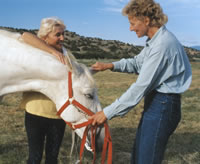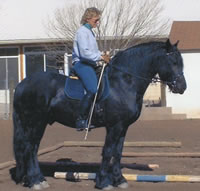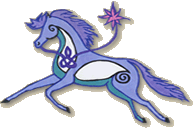Why TTEAM?
Tellington TTOUCH for Horses in Albuquerque, New Mexico

Linda Tellington-Jones and Jayne
When Linda Tellington-Jones took the Feldenkrais training and applied it to horse training, she opened a new world of problem solving previously unexplored.
In developing TTEAM (Tellington TTouch Equine Awareness Method), Linda found a way to unlock the puzzle for horses that were being trained in/within the parameters of what was considered ‘good traditional’ methods.
TTEAM can be used as an introduction to the learning process for horses and a supplement to traditionally successful training methods. It has the ability to help the horseperson bridge the communication gap that often occurs between horses and their people. Starting with the belief that most horses would be happy to please us and that when there are misunderstandings often horse’s language is misinterpreted as them ‘being bad’ instead of realizing it is their only means of communicating. The puzzle is for us to listen and attempt to interpret correctly what our horse’s behavior means.
Some horses just never reached their full potential and when good riders, excellent trainers and horseman in general were confronted with a horse that ‘should’ be going better, harsher methods and pursuit of false and usually temporary results would sometimes be tried. In spite of knowing that the training of horses takes time, the attitude of trying to ‘make something happen’ did take over.

Spartacus in a Labyrinth
When ‘traditional’ methods crossed the line into cruelty it was often the result of frustration on the part of the trainer/rider in response to the horse’s fear.
The question/problem would remain unsolved and masked by harsher riding in the worst cases or just plain giving up on that individual. Something continued to hold back the horse’s ability to do, to learn, to progress . . . what stopped them? Those were the questions that needed a system/method to go about finding the answers.
TTEAM work is a the tool that can be both diagnostic and therapeutic.
Acknowledging fear, pain, habit and the role instinct plays in a horse’s behavior are key principles. These all affect how and what a horse learns.
Poorly fitting tack, sore backs, neglected teeth, and poor hoof care effect the way a horse uses its body. What can be revealed through TTEAM is how this impacts the posture of the horse and the consequences on its behavior. This allows the horseperson an opportunity to solve issues and open the door to changes in behavior and the possibility of achieving maximum performance. Not just performance but the opportunity to interact with horses in a way that is mutually beneficial.
We cannot ever know a horses complete history . . . Often they develop habits of posture that interfere with riding goals long before we begin training them. Pasture injuries, fears and random traumatic incidents all figure into the behavior of young horse that is first presented to a trainer.
There is nothing inherently wrong with traditional training methods taught by the masters of dressage or in the various cavalry schools. The aids and the order in which they are introduced as well as the various school exercises have stood the test of time in their ability to train a horse in a gradual method which has a logical sequence based on increased understanding of what is expected and the development of strength to continue progressing, in knowledge, and overall physical development. The object is to develop the horse and avoid methods that would lead to the horse breaking down.
What was missing was the ability to redirect and refocus efforts in a non-threatening way and effect a permanent change when the training hit a snag. When traditional training methods go wrong it is often because the horse’s own language is misinterpreted or ignored. Even with the best of intentions the question of what to do often remained unanswered.
Flexibility is the hallmark of many great trainers. Flexibility is synonymous with TTEAM.
TTEAM techniques supplement traditional training by:
- Evaluating posture and offering exercises that teach the horse how to use its body differently, more effectively in order to improve posture
- Finding and relieving sources of pain
- Resolving fear related issues
- Identifying need for Veterinary or Alternative therapies
TTEAM work supports long established principles and goals of horse training set out in the training pyramid; calm, supple, forward (calm, supple, straight, strong, forward).
The goal of all good training should be a relaxed confident obedient individual who is pleasant to be around and likely to stay sound a long time because he/she has learned to use his/her body in a way that supports soundness by achieving balance and symmetry with correct muscle development.
TTEAM work helps support that goal.


Follow Jayne